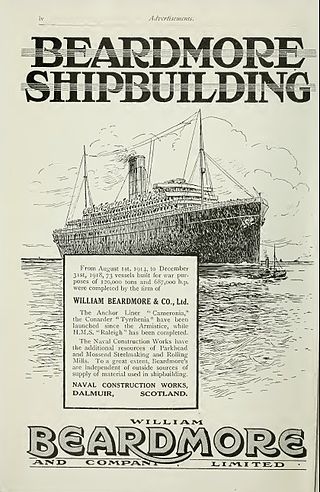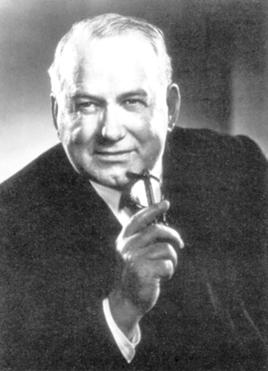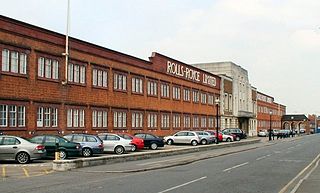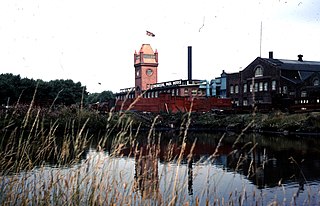The Business
John Summers died on 10 April 1876, at the age of 54. Three of his sons, James, John and Alfred, carried on the business, and they were joined by another brother, Henry Hall Summers in 1869. Space for expansion at the Globe Works having been exhausted, the firm opened the Hawarden Bridge Steelworks at Shotton in 1896.
In 1898 the firm became a Private Limited Company and in 1908, on completion of new offices, the headquarters were transferred to Shotton. By 1909 the company was the largest manufacturer of galvanized steel in the country, and probably the largest manufacturer of steel nail strips and sheets.
In 1919 the Wolverhampton Corrugated Iron Company at Ellesmere Port was taken over. John Summers & Sons also bought the Castle Fire Brick company in Buckley and the next year took over the Shelton Iron, Steel & Coal Co, Stoke-on-Trent. This company was Shotton's supplier of pig iron, a very scarce item at the time and this acquisition meant that the company had become very largely self-contained and self-sufficient. [1]
William Arthur Robotham of Rolls-Royce recalled the two Summers brothers in the 1920s, both knowledgeable engineers; Geoffrey and Dick (who went to Shrewsbury School with Robotham's brother, and finally took over from his father John as head of the firm). As John was immensely wealthy the two brothers could afford to run Rolls-Royce cars, though in their early twenties. [2]
John Summers & Sons Ltd was nationalised in 1951, becoming part of the Iron and Steel Corporation of Great Britain, was denationalised shortly afterwards, and renationalised in 1967.
The former HQ building at Shotton has been named by the Victorian Society as a heritage building at risk of disrepair. [3]
GKN Ltd is a British multinational automotive and aerospace components business headquartered in Redditch, England. It was a long-running business known for many decades as Guest, Keen and Nettlefolds. It can trace its origins back to 1759 and the birth of the Industrial Revolution. In 2018 GKN plc was acquired by Melrose Industries plc in a hostile takeover. Melrose divested GKN Automotive and GKN Powder Metallurgy in 2023 and listed them as Dowlais Group on the London Stock Exchange. GKN Aerospace continues to be owned by Melrose plc.

Rolls-Royce Turbomeca Limited (RRTM) is a joint venture between British aero-engine manufacturer Rolls-Royce plc (UK) and French helicopter engine specialist Safran Helicopter Engines. It manufactured aero-engines and provided associated support services to end users.

Walter Owen Bentley, was an English engineer who founded Bentley in London. He was a motorcycle and car racer as a young man. After making a name for himself as a designer of aircraft and automobile engines, Bentley established his own firm in 1919. He built the firm into one of the world's premier luxury and performance auto manufacturers, and led the marque to multiple victories at the 24 Hours of Le Mans. After selling his namesake company to Rolls-Royce in 1931, he was employed as a designer for Lagonda, Aston Martin and Armstrong Siddeley.

The Rolls-Royce Meteor later renamed the Rover Meteor is a British tank engine that was developed during the Second World War. It was used in British tanks up to 1964. It was a result of co-operation between Leyland Motors and Rolls-Royce who between them in 1941 had suggested that a specialised de-rated version of the Merlin aero-engine would be highly suitable for use in armoured fighting vehicles.

William Beardmore and Company was a British engineering and shipbuilding conglomerate based in Glasgow and the surrounding Clydeside area. It was active from 1886 to the mid-1930s and at its peak employed about 40,000 people. It was founded and owned by William Beardmore, later Lord Invernairn, after whom the Beardmore Glacier was named.

Ernest Walter Hives, 1st Baron Hives, was the one-time head of the Rolls-Royce Aero Engine division and chairman of Rolls-Royce Ltd.

ITP Aero is a Spanish aero engine and gas turbine manufacturer.

The Bentley Mark VI is an automobile from Bentley which was produced from 1946 until 1952.
Cosmos Engineering was a company that manufactured aero-engines in a factory in Fishponds, Bristol during World War I. Sir Roy Fedden, the company's principal designer, developed the 14-cylinder radial Mercury engine during this period. The company was taken over by the Bristol Aeroplane Company in 1920.
Thrupp & Maberly was a British coachbuilder based in the West End of London, England. Coach-maker to Queen Victoria, it operated for more than two centuries until closed under Rootes Group ownership in 1967.

Pressed Steel Company Limited was a British car body manufacturing business founded at Cowley near Oxford in 1926 as a joint venture between William Morris, Budd Corporation of Philadelphia USA, which held the controlling interest, and a British / American bank J. Henry Schroder & Co. At that time the company was named The Pressed Steel Company of Great Britain Limited. It acquired Budd's patent rights and processes for use in the United Kingdom. Morris transferred his interest to his company, Morris Motors Limited.

Rolls-Royce Limited was a British luxury car and later an aero-engine manufacturing business established in 1904 in Manchester by the partnership of Charles Rolls and Henry Royce. Building on Royce's good reputation established with his cranes, they quickly developed a reputation for superior engineering by manufacturing luxury cars. The business was incorporated as "Rolls-Royce Limited" in 1906, and a new factory in Derby was opened in 1908. The First World War brought the company into manufacturing aero-engines. Joint development of jet engines began in 1940, and they entered production in 1944. Rolls-Royce has since built an enduring reputation for the development and manufacturing of engines for military and commercial aircraft.

A tin ceiling is an architectural element, consisting of a ceiling finished with tinplate with designs pressed into them, that was very popular in Victorian buildings in North America in the late 19th and early 20th century. They were also popular in Australia where they were commonly known as pressed metal ceilings or Wunderlich ceilings. They were also used in South Africa.

Mather & Platt is the name of several large engineering firms in Europe, South Africa and Asia that are subsidiaries of Wilo SE, Germany or were founded by former employees. The original company was founded in the Newton Heath area of Manchester, England, where it was a major employer. That firm continues as a food processing and packaging business, trading as M & P Engineering in Trafford Park, Manchester.

The Globe Works are a former cutlery factory situated in the City of Sheffield, South Yorkshire, England on Penistone Road in the suburb of Neepsend. The Works are a Grade II* Listed Building which in the late 1980s were renovated to provide modern office space. It is part of the Kelham Island Conservation Area.
The Grubb Family Iron Dynasty was a succession of iron manufacturing enterprises owned and operated by Grubb family members for more than 165 years. Collectively, they were Pennsylvania's leading iron manufacturer between 1840 and 1870.

Kirkstall Forge is a 57-acre mixed-use development located in Kirkstall in Leeds, West Yorkshire. The site is one of the oldest most continuously used industrial sites in England. It was operated by Kirkstall Forge Engineering, a metalworking business. It was a working forge until 1995 when the site was bought by Commercial Estates Group who have had plans approved to build 1,050 homes, 300,000 sq ft of office space, 100,000 sq ft of leisure and retail and a primary school. In June 2016 a railway station was opened on the site served by trains between Leeds and Bradford.

Barker & Co. was a British coachbuilder, a maker of carriages and in the 20th century bodywork for prestige cars, including Rolls-Royce, Bentley, and Daimler.
John Bradley & Co was a company established in 1800 by John Bradley at Stourbridge in the West Midlands area of England. The company developed into a large industrial concern with furnaces, ironworks and mines. Under James Foster, John Bradley's half brother, it was instrumental in bringing the first commercial steam locomotive into the Midlands area in 1829. The firm stayed under family control until the early years of the 20th century when first the mining (1913) and then the ironworks (1919) were sold off. Part of the business continued to trade under the name John Bradley & Co. (Stourbridge) Ltd until after the Second World War.
William Arthur Robotham was a Rolls-Royce executive involved in the development of Rolls-Royce cars, during World War II of tanks and tank engines, and post-war of Rolls-Royce and Bentley cars complete with bodies and then of industrial petrol and diesel engines.














